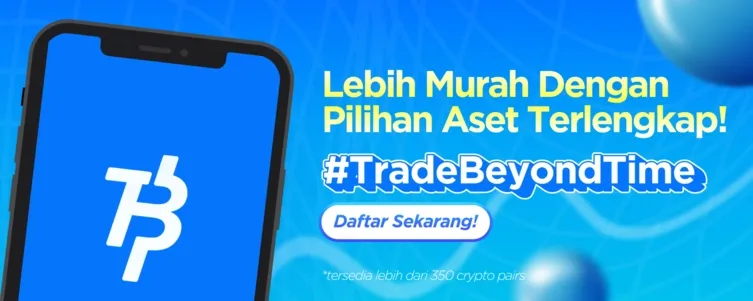Stellar (XLM): Explanation, Functions, and Everything You Need to Know
2024-12-05
Bittime - Stellar (XLM) is a digital asset that offers fast cross-border transactions and low fees. This article explains the functions, origins, and features of the Stellar blockchain that can simplify international payments and create specialized tokens.
Stellar (XLM) is one of the blockchains known for its ability to facilitate fast and low-cost cross-border transactions.
Built with the aim of enabling a more inclusive financial system, Stellar is not only a digital asset, but also an ecosystem that allows the creation of various applications and custom tokens.
Stellar was initially launched in 2014 by Jed McCaleb and Joyce Kim, two individuals previously involved in the development of Ripple (XRP).
Using Ripple's base code, Stellar eventually evolved into a separate blockchain with a focus on improving international payment systems and helping individuals in developing countries who do not have access to traditional banking.
The XLM coin, which is the primary digital asset on the Stellar network, is used to facilitate transactions as well as pay transaction fees on the network.
Also read: XLM, XRP, and HBAR Comparison: Which Crypto is Best to Buy?
Main Functions of the Stellar Blockchain (XLM)
The Stellar (XLM) blockchain is designed to facilitate cross-border transactions with low fees and very high speeds.
One of the key features of Stellar is its ability to transfer assets quickly between countries, even in different currencies. This allows users to transfer money between banks more efficiently, without the need for multiple parties or high transaction fees.
Stellar also allows users to create custom tokens on top of its blockchain. These tokens can be used for a variety of purposes, including representation of fiat currencies, tokenized securities, and stablecoins.
Thus, the Stellar blockchain can be used by companies and individuals to create a more decentralized and secure financial ecosystem.

Stellar History and Development
Stellar was first developed after a difference of opinion between Jed McCaleb and Ripple Labs, which eventually led to the creation of Stellar as an independent blockchain.
The Stellar protocol then adopted a consensus system known as the Stellar Consensus Protocol (SCP), which replaced Ripple's consensus system, the RCPA. This change allows for faster and more energy-efficient transactions, reducing the reliance on mining like that of Bitcoin.
Additionally, in 2016, large fintech companies such as IBM joined the Stellar network to utilize the technology in their cross-border payment projects.
This success solidified Stellar as the top choice for global payment solutions, with many institutions beginning to adopt Stellar blockchain for various financial applications.
Also read: Who is the CEO Founder of Stellar (XLM): Jed McCaleb's Story and Biography
Stellar Blockchain Advantages
The Stellar blockchain has several advantages that set it apart from many other blockchains. One of them is the extremely high transaction speed, allowing transactions to be processed in just a few seconds.
With extremely low transaction fees, Stellar is a very attractive option for global payment systems. In addition, users can also create and exchange tokens in a highly decentralized and secure manner.
XLM cannot be mined or staked like other digital assets. Instead, the entire supply of XLM has been created since its launch, with most of the tokens owned by the Stellar Development Foundation (SDF).
Although there are concerns about the SDF's centralized control of the XLM supply, they are committed to destroying most of the uncirculated XLM supply to reduce inflation and ensure a more stable supply.
Conclusion
Stellar (XLM) is a blockchain that prioritizes speed, low fees, and inclusivity in the global financial system.
With its ability to facilitate cross-border transactions and create various token-based applications, Stellar has established itself as one of the important players in the world of digital assets.
The technology supported by the Stellar Development Foundation (SDF) continues to evolve, providing a lot of potential in creating a more efficient and secure payment system for users around the world.
Stellar (XLM) FAQ
What is Stellar (XLM)?
Stellar (XLM) is a digital asset used on the Stellar blockchain network to facilitate fast and cheap cross-border transactions. Stellar is designed to make international payments easier and allows for the creation of specialized tokens on top of its blockchain network.
How does Stellar (XLM) work?
Stellar uses the Stellar Consensus Protocol (SCP), which enables faster and more energy-efficient transactions than other blockchains such as Bitcoin. XLM is used to pay transaction fees within the Stellar network and can be transferred between users directly.
What are the advantages of using Stellar (XLM)?
The main advantages of Stellar are fast transactions and low fees. Stellar's blockchain enables secure and decentralized asset exchange, and can be used to create custom tokens that represent different types of assets, including fiat currencies and stablecoins.
How to Buy Crypto on Bittime

Want to trade sell buy Bitcoins and crypto investment easily? Bittime is here to help! As an Indonesian crypto exchange officially registered with Bappebti, Bittime ensures every transaction is safe and fast.
Start with registration and identity verification, then make a minimum deposit of IDR 10,000. After that, you can immediately buy your favorite digital assets!
Check the exchange rate BTC to IDR, ETH to IDR, SOL to IDR and other crypto assets to find out today's crypto market trends in real-time on Bittime.
Also, visit the Bittime Blog for interesting updates and educational information about the crypto world. Find reliable articles about Web3, blockchain technology, and digital asset investment tips designed to enrich your crypto knowledge.
References
msn.com, Stellar Blockchain: Overview, History, FAQ, accessed on December 5, 2024.
coincodex.com, What Is Stellar? XLM Cryptocurrency History, Features, Tokenomics and More, accessed on December 5, 2024.
Author: AWW
Disclaimer: The views expressed belong exclusively to the author and do not reflect the views of this platform. This platform and its affiliates disclaim any responsibility for the accuracy or suitability of the information provided. It is for informational purposes only and not intended as financial or investment advice.
